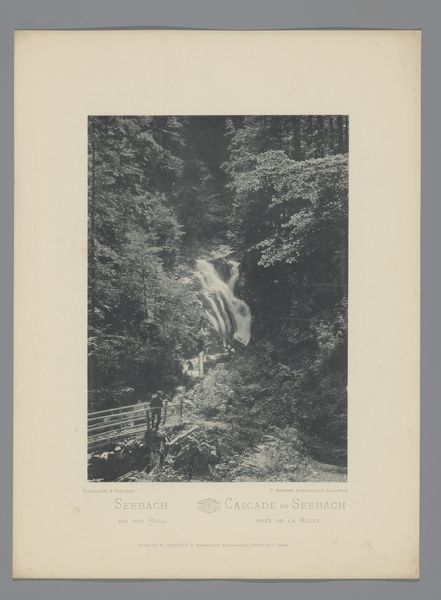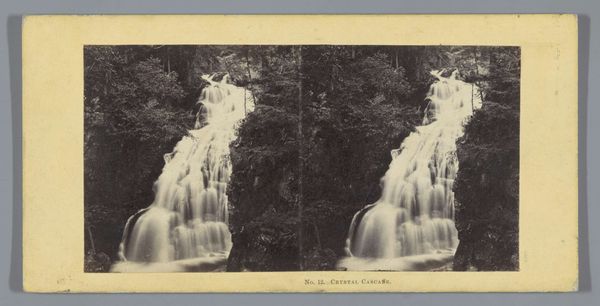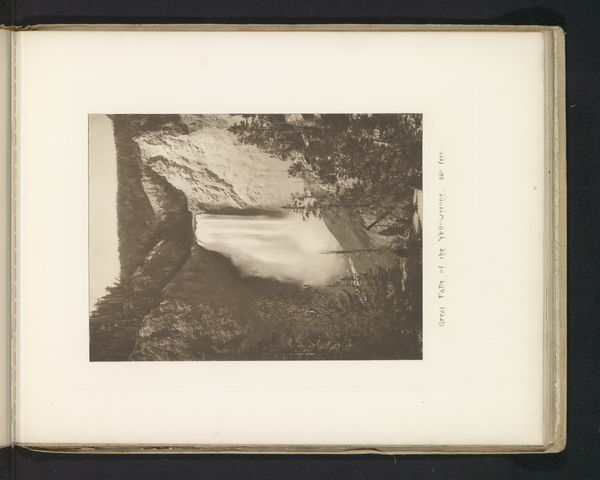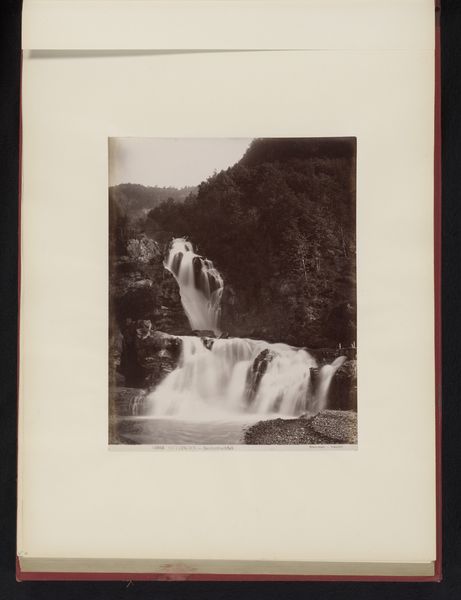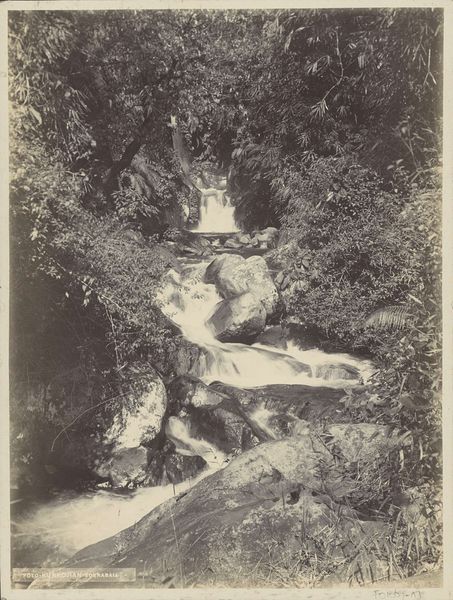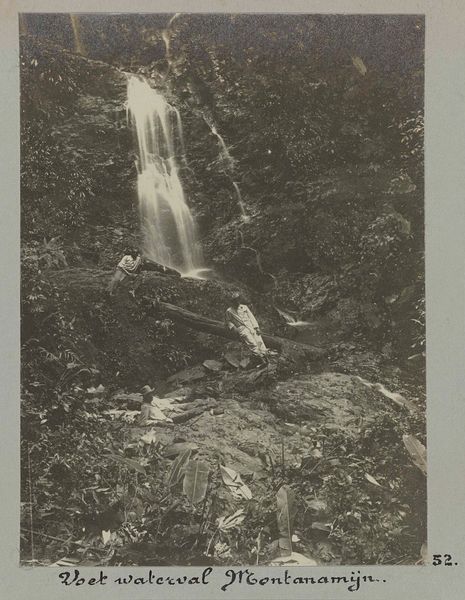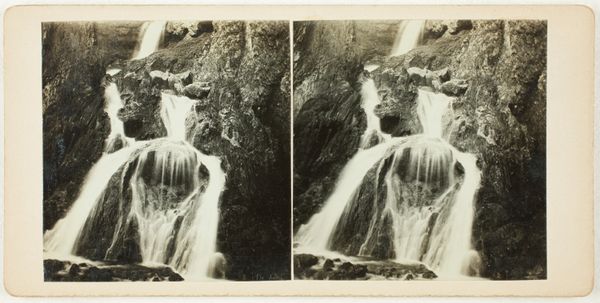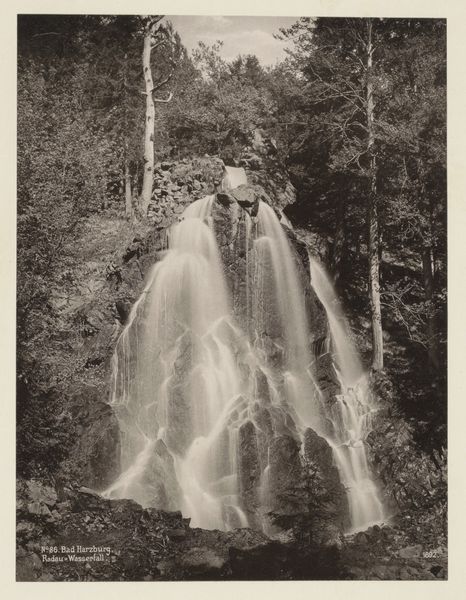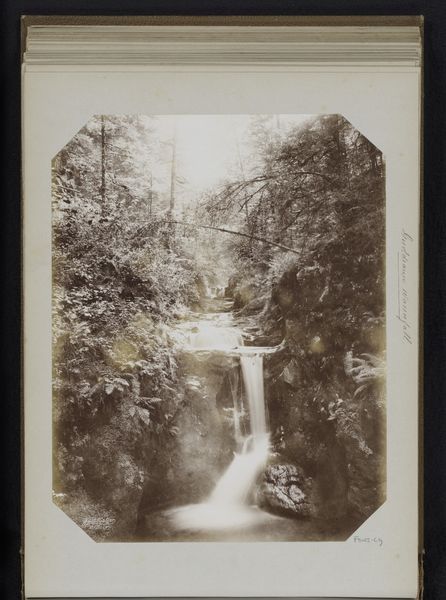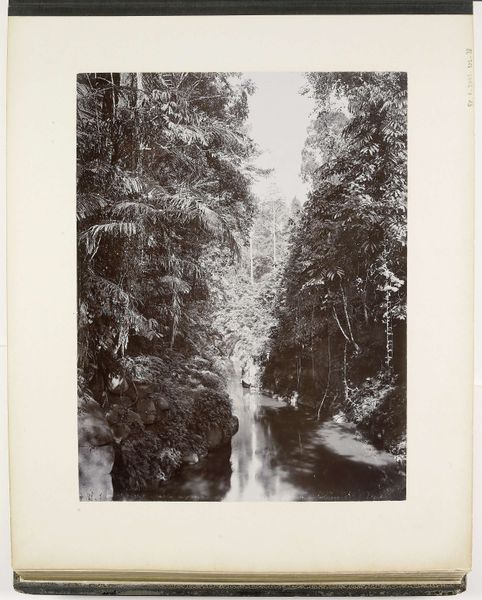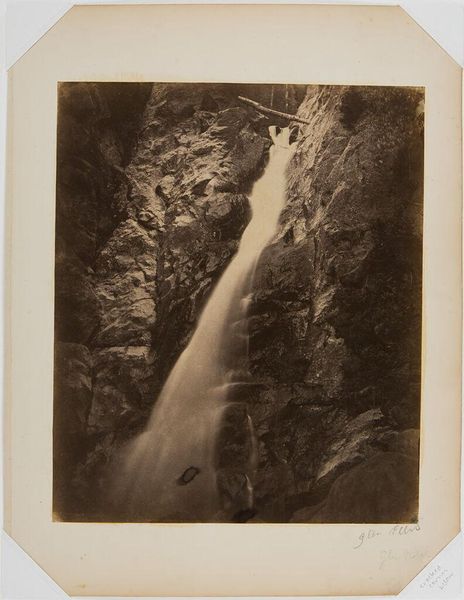
Dimensions: height 209 mm, width 152 mm
Copyright: Rijks Museum: Open Domain
Curator: Looking at this print, "Waterval van Lac Blanc in de Vogezen", which translates to Waterfall of Lac Blanc in the Vosges Mountains, my initial response is…wow, that water looks so cold. It’s a shimmery cascade, almost hypnotizing in its movement. Editor: I love that you say "cold" right away, because I instantly think of the sublime. Dating from before 1894 and realized by Charles Bernhoeft in gelatin silver print, the waterfall's powerful beauty aligns so closely with Romantic ideals and anxieties. It reflects that period's grappling with the awesome, and potentially overwhelming, power of nature. Curator: Right! And how do we reconcile that overwhelming feeling with what appears to be a guy standing calmly beside the water, as if simply out for a stroll? Is he dwarfed by the falls, or conquering them through observation? Maybe it says something about privilege. Who gets to calmly observe and intellectualize nature? Editor: The scale is wonderfully ambiguous! Bernhoeft seems to position that figure – is he a hiker, or a researcher perhaps? – to invite the viewer in. But for me, he amplifies a sense of solitude that permeates the scene, while providing a grounding sense of scale against nature’s grandeur. Curator: Absolutely. The composition and the pictorialist style feel almost painterly – look at the way the water blurs, evoking movement. This soft-focus effect reminds us that photographs aren’t simply records of reality but are also interpretations shaped by artistic intent. The lack of sharp detail, while perhaps aesthetic, also hides much of the environmental conditions of the forests, possibly a political or social commentary? Editor: Yes! And, maybe even spiritual; I am reminded of meditation or a pilgrimage into nature. It almost speaks to a seeking of something – of finding peace amid the rush of daily life, or some sort of… personal truth reflected in the landscape. Curator: That intersection is compelling. Looking through a contemporary lens, it encourages us to question representation itself: who gets to represent these landscapes, how, and with what biases shaping their vision? Editor: The photograph makes me ponder the enduring pull of nature. I want to go to the Vosges, to breathe that misty air and let the water drown out everything else. I didn’t expect a pre-1894 image to conjure up such an escape! Curator: Ultimately, reflecting on the intertwined ideas of nature and society reveals, even through pictorial aesthetics, powerful cultural and philosophical positions of its time.
Comments
No comments
Be the first to comment and join the conversation on the ultimate creative platform.
